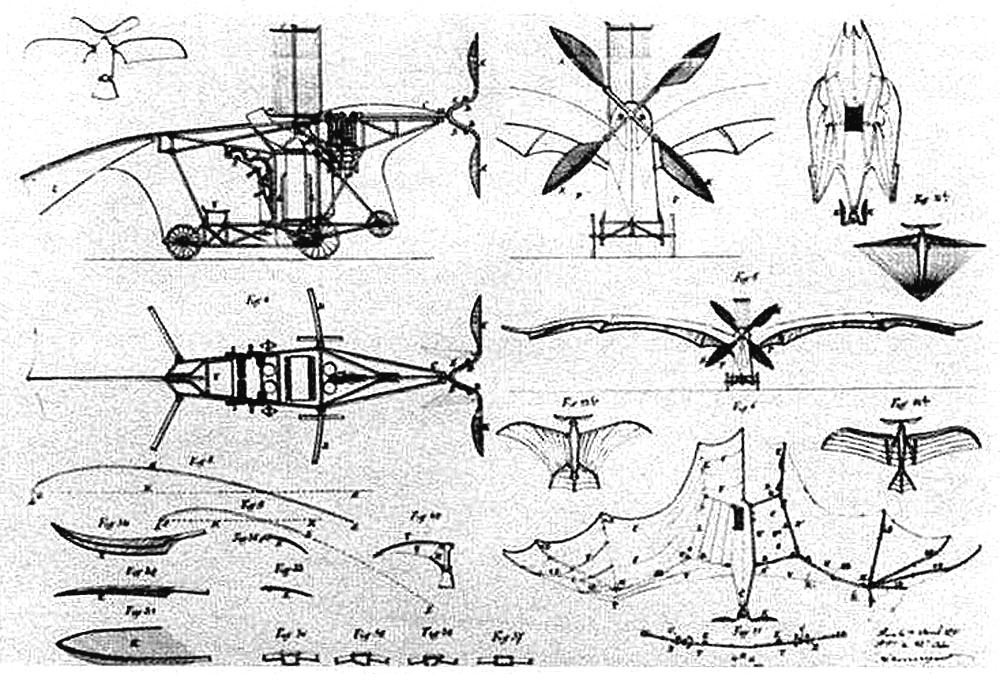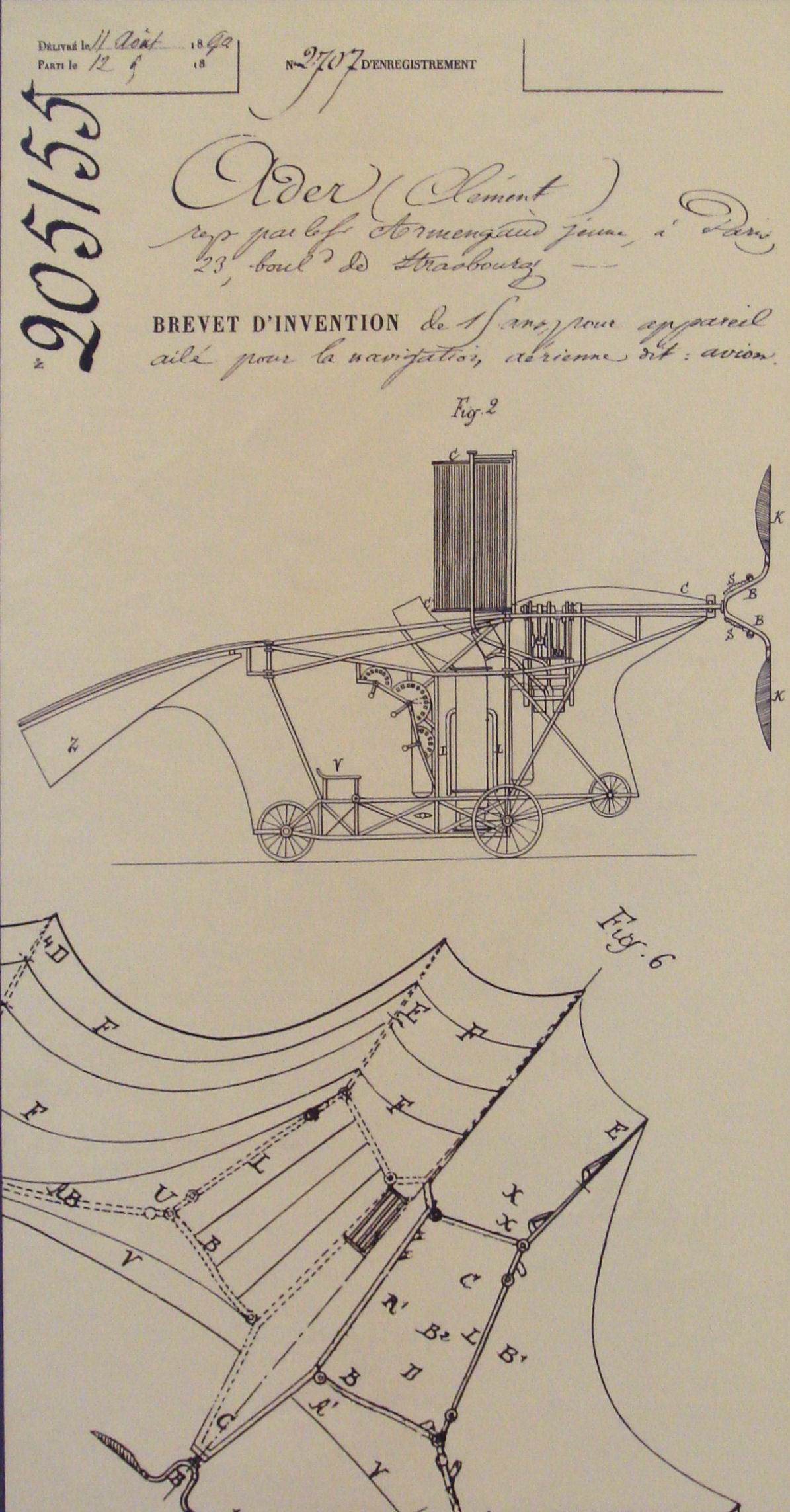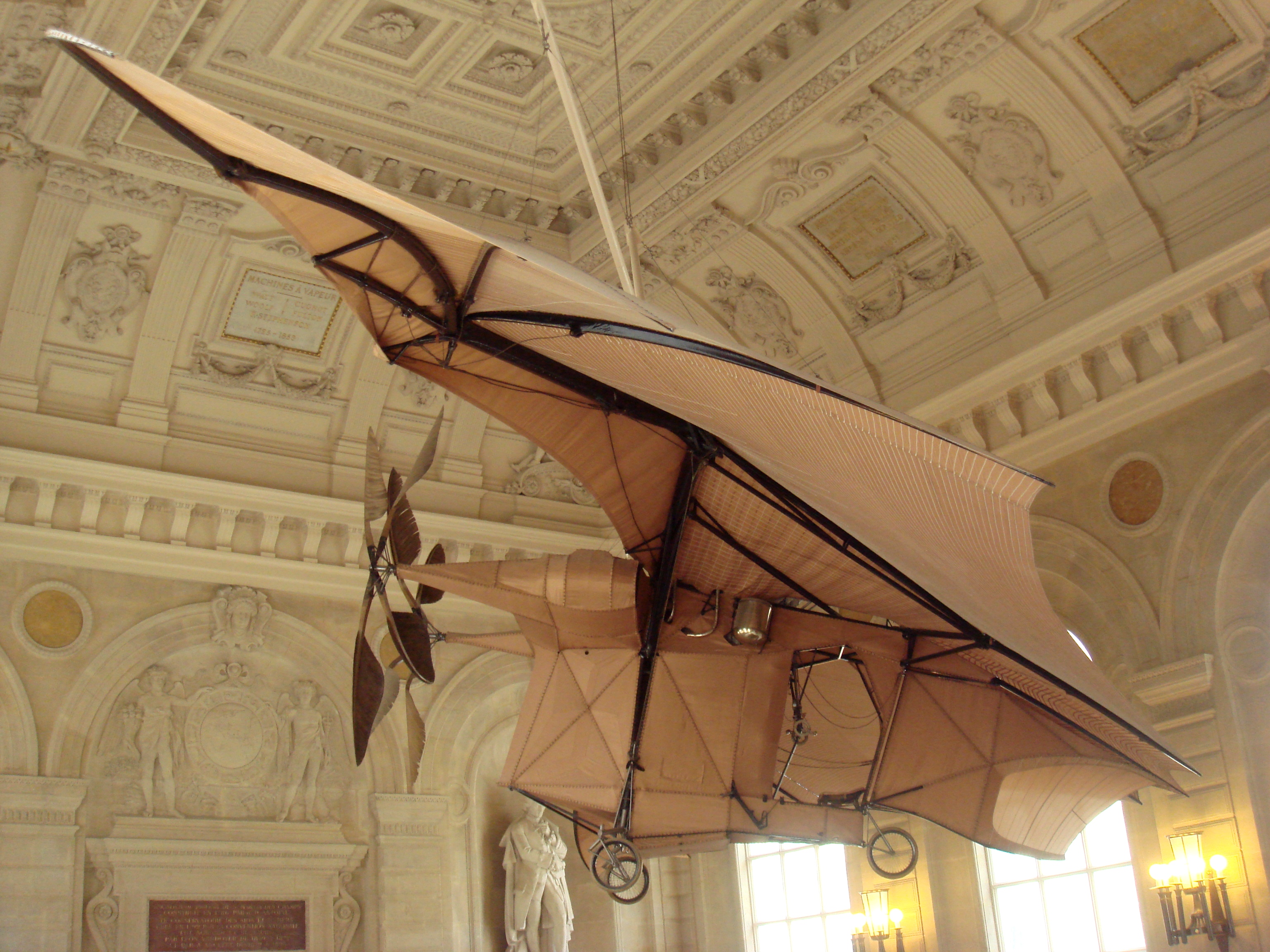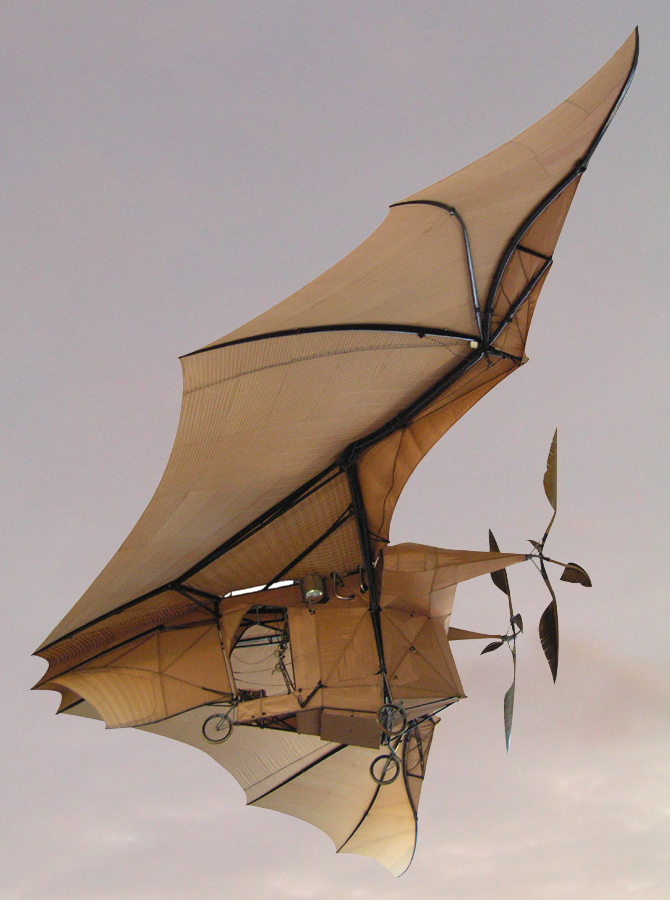1. Life and Background
Clément Ader's life was marked by an early interest in invention and a diverse career that laid the groundwork for his ambitious aviation pursuits.
1.1. Early Life and Education
Clément Agnès Ader was born on April 2, 1841, in Muret, a commune in the Haute-Garonne department of France, near the city of Toulouse. He pursued studies in electrical engineering, which provided him with a strong foundation in the principles that would underpin many of his later inventions. In 1870, he was also an early pioneer in the sport of cycling in France.
1.2. Early Career
Ader began his professional career as an engineer, quickly establishing himself as an innovator in both electrical and mechanical fields. His early work included significant improvements to the telephone, originally invented by Alexander Graham Bell. These advancements led to Ader's establishment of the first telephone network in Paris in 1880. His expertise in creating various electrical machines and devices allowed him to accumulate considerable wealth, which he later invested heavily into his pursuit of flight.
2. Electrical and Mechanical Inventions
Beyond his groundbreaking work in aviation, Clément Ader made substantial contributions to electrical and mechanical engineering, demonstrating his versatility as an inventor.
2.1. Telephone and Théâtrophone
Ader significantly improved upon Alexander Graham Bell's original telephone design in 1878. His refinements were instrumental in the establishment of the first telephone network in Paris in 1880. A year later, in 1881, Ader invented the théâtrophone, a revolutionary system for transmitting sound. This device allowed listeners to receive separate audio channels for each ear, creating a stereophonic sound experience. The théâtrophone notably facilitated the first stereo transmission of opera performances over a distance of 2 mile in 1881, offering an early glimpse into the potential of immersive audio.
2.2. V8 Engine
In 1903, Ader designed an innovative V8 engine specifically for the Paris-Madrid race, a prominent early automotive competition. Although three or four units of this engine were produced, none were ultimately sold. This venture demonstrated Ader's mechanical ingenuity beyond his primary focus on aviation.
3. Aircraft Development
Following his work with engines, Clément Ader turned his attention to the formidable challenge of mechanical flight, dedicating considerable time and financial resources to this pursuit until the end of his life. His designs were heavily influenced by the studies of Louis Pierre Mouillard (1834-1897) on the flight dynamics of birds.
3.1. Ader Éole

Ader constructed his first flying machine, the Ader Éole (named after `ÉoleFrench`, the French form of Aeolus, the Greek god of wind), in 1886. This pioneering aircraft featured a distinctive bat-like design and was a monoplane. It was powered by a lightweight, four-cylinder steam engine of Ader's own invention, rated at 20 hp. The engine itself weighed only 112 lb (51 kg). This engine drove a four-bladed propeller. The Éole's wings spanned 46 ft (14 m) and were equipped with a system that allowed for warping, mimicking the flexibility of a bat's wing. The aircraft's total weight was 661 lb (300 kg).
On October 9, 1890, Ader attempted to fly the Éole. This event is widely recognized by aviation historians as a significant early attempt at powered take-off. While the flight was uncontrolled, the Éole is credited with achieving a powered take-off and flying approximately 164 ft (50 m) at a height of about 7.9 in (20 cm) in ground effect. This achievement predated the Wright brothers' Wright Flyer by 13 years and was notable for being an unassisted powered take-off, unlike earlier experiments that utilized slopes or jump platforms. Ader himself claimed to have successfully lifted off the ground in the Éole.

3.2. Ader Avion II
After the Éole, Ader began the construction of a second aircraft, which he named the Avion II, also referred to as the Zephyr or Éole II. Most historical sources indicate that the development of this aircraft was never completed. Work on the Avion II was ultimately abandoned in favor of the subsequent and more advanced Avion III. Although Ader later claimed to have flown the Avion II for a distance of 328 ft (100 m) in August 1892 in Satory, near Paris, this claim has not been widely accepted by aviation historians.
3.3. Ader Avion III

Ader's progress in aircraft development attracted the attention of Charles de Freycinet, the French Minister of War. With financial backing from the French War Office, Ader proceeded to develop and construct the Avion III. This aircraft was an imposing, bat-like machine constructed from linen and wood. It featured a wingspan of 48 ft and was equipped with two four-bladed tractor propellers. Each propeller was independently powered by a 30 hp steam engine.
After extensive taxiing trials, Ader conducted flight attempts with the Avion III on a circular track at Satory. On October 12, 1897, he performed taxiing tests, and two days later, on October 14, he attempted a flight. During this attempt, after a short run, the machine was reportedly caught by a gust of wind, veered off the track, and came to a stop. Accounts of this trial vary; some eyewitnesses claimed the Avion III advanced, lifted into the air, and flew over 300 yd before its official commission, while others asserted it broke down before even taking off. Regardless, the French army, dissatisfied with the outcome, withdrew its funding. The results of the trials were initially kept secret. It was only in November 1910, after the Wright brothers had achieved successful flights, that the official reports on Ader's attempted flights were released by the commission, stating that they were unsuccessful. The French word for airplane, `avionFrench`, is derived from Ader's prototype.
4. Book: L'Aviation Militaire
Clément Ader remained a staunch advocate for the advancement of aviation even after his active development of aircraft prototypes. In 1909, he published an influential book titled L'Aviation Militaire (Military Aviation) through the Berger-Levrault publishing house in Paris. This book, based on ideas Ader had conceived in the late 19th century and refined until 1907, proved to be highly popular, going through ten editions in the five years leading up to World War I.
L'Aviation Militaire is particularly notable for its remarkably prescient vision of aerial warfare and its detailed concept of the modern aircraft carrier. Ader accurately described a vessel with a flat flight deck, an island superstructure, deck elevators, and a hangar bay. His innovative idea for an aircraft carrier was relayed to the United States by the US naval attaché in Paris, which subsequently influenced the first trials of aircraft launching from a ship in the United States in November 1910.
Ader stated in L'Aviation Militaire: "An airplane-carrying vessel is indispensable. These vessels will be constructed on a plan very different from what is currently used. First of all the deck will be cleared of all obstacles. It will be flat, as wide as possible without jeopardizing the nautical lines of the hull, and it will look like a landing field."
The book was later translated into English in 2003 under the title "Military Aviation."
5. Personal Life and Later Years
After his most active period of invention, Clément Ader largely withdrew from public life. He spent his later years managing a vineyard on the outskirts of Toulouse. In 1922, he was awarded the Légion d'honneur, one of France's highest decorations, in recognition of his significant contributions. He continued to be an active proponent of aviation development even in his retirement.
6. Assessment and Influence
Clément Ader's work has had a profound impact on the history of aviation, though his achievements have also been subject to historical scrutiny and debate.
6.1. Legacy and Recognition

Ader is widely admired for his pioneering efforts in powered flight. His experimental aircraft gave the French language the word `avion` for a heavier-than-air aircraft, a term that remains in common use today. His legacy is further recognized through various honors: in 1938, France issued a postage stamp commemorating him, and Airbus named one of its aircraft assembly sites in Toulouse after him. He is often referred to as "the father of aviation" for his early and persistent pursuit of mechanical flight. His Avion III is preserved and displayed at the Musée des Arts et Métiers in Paris, serving as a tangible testament to his innovative spirit.

6.2. Criticism and Controversy
Despite his significant contributions, Ader's place in aviation history is not without controversy. Some aviation historians, particularly outside France, have raised objections to the high praise he receives, arguing that his flights often ended in crashes and that he exaggerated his achievements in his later years. The claims surrounding the Avion III's flight in 1897, in particular, remain debated, with official French military reports from 1910 stating that the trials were unsuccessful. However, the flight of the Éole on October 9, 1890, which achieved a powered take-off and short flight in ground effect, is generally less disputed and continues to be recognized as a pivotal moment in the early history of powered flight. These ongoing discussions highlight the complexities of assessing early aviation pioneers' contributions.
7. Death
Clément Ader died on May 3, 1925, in Toulouse, France.